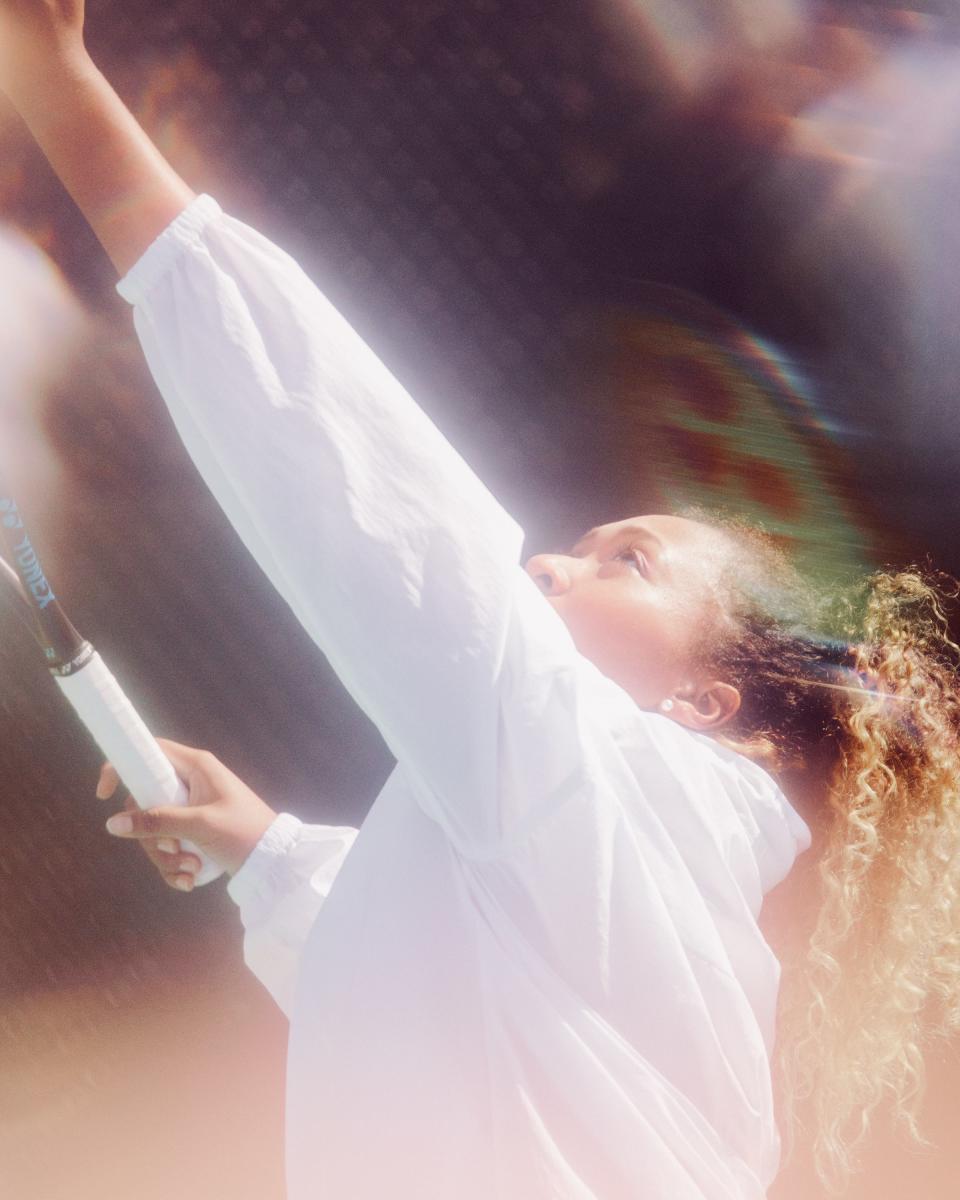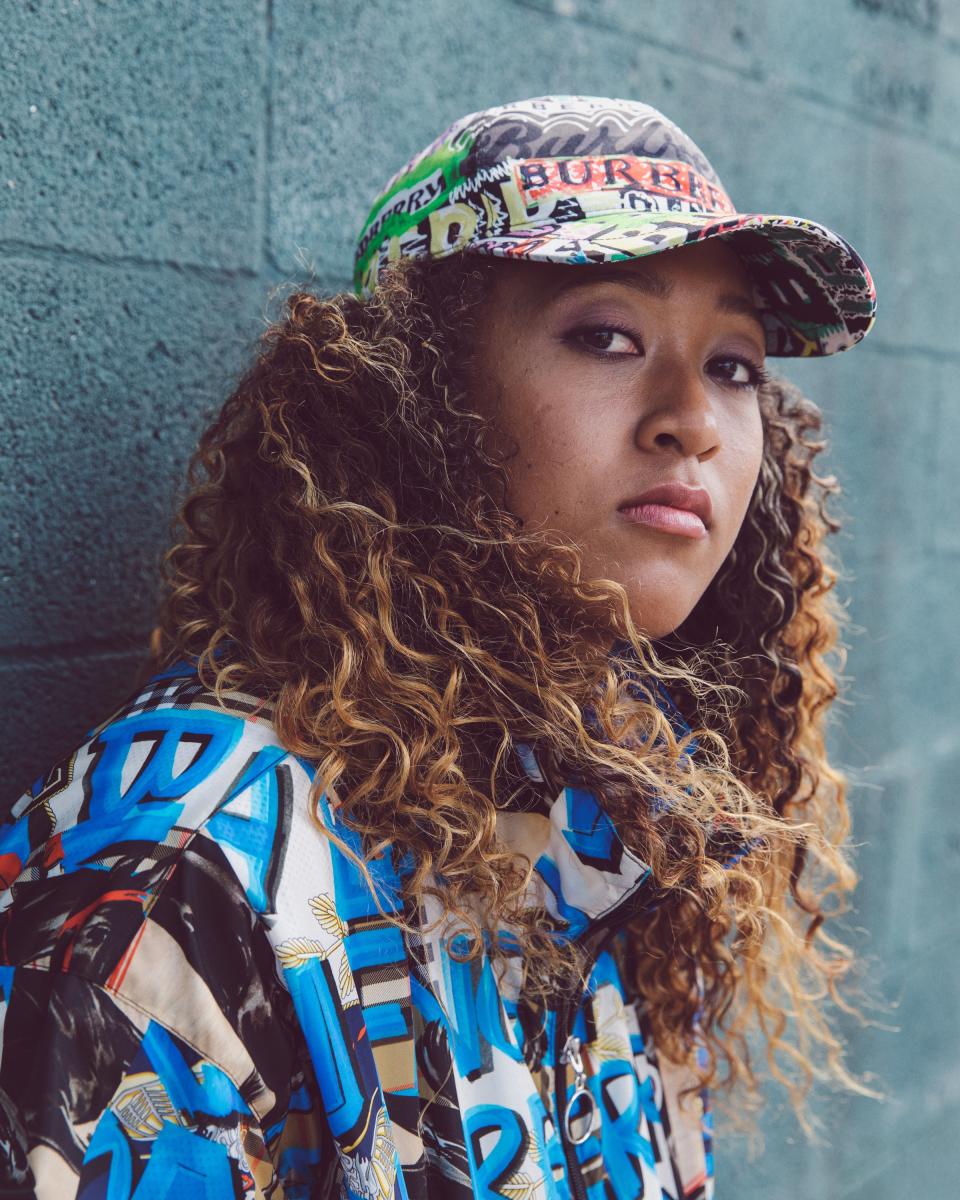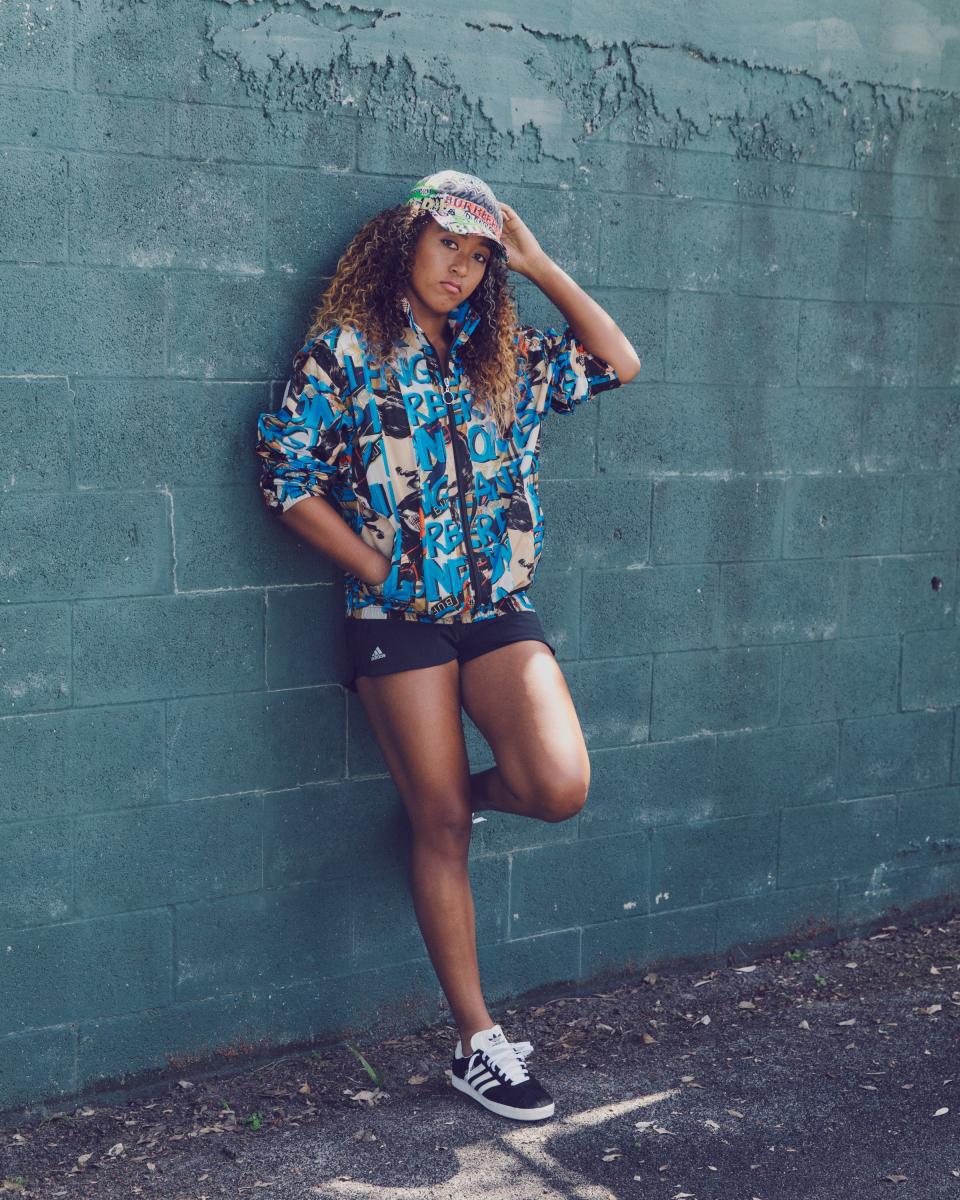Naomi Osaka Is the Coolest Thing in Tennis
At Indian Wells, Naomi Osaka looked like she could beat any tennis player in the world. She’d entered the tournament unseeded, having never won a WTA title before. But in the heat of the desert, she proceeded—efficiently and almost cruelly—to dismantle opponent at their own game. First, the 20-year-old stunned former no. 1 player Maria Sharapova in straight sets with her precise and powerful serve. (Sharapova would part ways with her coach after that match.) Later, she took out Karolína Plíšková, another former no. 1, with a unrelenting series of crushing forehands from the baseline.
And when defeating former no. 1’s wasn’t enough, she matched up against the current one, Simona Halep, and throttled her so badly that Halep didn’t win a single game in the second set. Her finals match against Daria Kasatkina was nearly as effortless. The victory speech she gave after that? A different kind of effortless.
“Hello, hi, I am—okay never mind,” she started, before meandering through a series of thank you’s in a seemingly random order, giggling throughout. After a couple minutes, she closed by saying, “This is probably gonna be the worst acceptance speech of all time.”
On the court, Osaka appeared confident and fearless. But as soon as she was off of it, she returned to being a soft-spoken teen with a penchant for nerdy interests. At a press conference after the finals match, Naomi Osaka described the feeling of winning her first title the way any champion would: in reference to a meme. “Towards the end I didn’t know that I won the match point,” she said. “So then I was like Caveman SpongeBob.”
Four days later, in the first round of the Miami Open, Osaka faced her childhood hero and inarguably the greatest living tennis player—perhaps the greatest ever—Serena Williams, a woman with more Grand Slam titles than Osaka has years on Earth.
Were you nervous to play Serena?
“My whole life, I’ve always wanted to play her,” Osaka says. “So I had nothing to be nervous about.”
Osaka stomped Williams in straight sets.


To understand Naomi Osaka, the brightest young talent in tennis, you don’t have to understand the sport. You need to know Overwatch. It’s a popular video game, and it’s the first thing she mentions when we start talking at Evert Tennis Academy in Boca Raton, Florida, where she usually trains, just a five-minute bike ride from her home. (Osaka plays for Japan, even though she’s lived in the U.S. since the age of three.)
On practice days, Osaka is on the court for four hours. Then she goes home and plays four, sometimes five hours of video games—mostly Overwatch with her older sister Mari. The game, a shooter where two teams of six square off, is composed of colorful cartoon characters, each corresponding to a class. There are more offensive types with a plethora of sci-fi weaponry, it being a video game and all. But Osaka prefers the defensive characters—“healers,” who support their teammates with medical aid, and “tanks,” who absorb bullets like a human shield.
“Like, I’m not that great at attacking,” Osaka says. “My aim is not that amazing, so I’d just rather be a shield or something.”
That’s funny, because I think people would describe your tennis playing as fairly aggressive and more offensive.
“Yeah, I’ve heard that a lot.”
So you are a very different Overwatch player than you are tennis player?
“Yeah, ummm…” A lot of our conversation is like this, Osaka’s sentences quietly trailing off into a void of polite laughs and ums.
Still, the gap between her self-assured on-court personality and her shyer off-court one doesn’t seem weird to her. She can compartmentalize those two modes. But explaining it, she still relates her tennis game to a video game: “I just feel like I know [tennis] is sort of my job and, like, if I were to say it, like, in a gaming term, then it’s sort of a mission that I have to complete. Um, so yeah. I just sort of tune everything out and just try my best to complete the mission.”
Later, I ask her coach, Sascha Bajin, who used to be Serena Williams’s hitting partner, if Osaka is capable of winning a Grand Slam this year. “Of course,” he says. “If she can keep her composure, yeah, I don’t see why not?”
But first, Naomi Osaka has to sort out different dilemma: “I was debating if I should travel with my PS4 or not.”

Like many sports, post-match press conferences are mandatory. (Following the loss in Miami, the WTA fined Serena Williams $1,000 for skipping.) They’re a chore to watch, particularly in the tennis world, where most players are buttoned up, resorting to safe clichés about effort and esteem for their opponent.
Despite being the circuit’s most soft-spoken player, Naomi Osaka is a champion of the press conference. It’s not just the Overwatch and SpongeBob talk—she’s earnest, totally endearing. Here’s Osaka talking about her win against Williams:
“Sometimes she plays matches where she doesn’t say ‘come on’ at all. And that’s a little bit sad, because it’s like, Do you think she’s trying? I just wanted her to say ‘come on’ once because then I knew maybe she would be trying a little bit. So once I heard the first ‘come on,’ I was like, Yeah!”
The usually humorless room of tennis beat reporters erupts in laughter.
“She’s just being real. She’s just being herself, and I think that that’s very refreshing to a lot of people,” Bajin says. “A lot of people in this world, sadly, in order not only to protect themselves but to not let people get close to them, they start faking emotions.”
But there’s one particular press conference that stuck out to me. After losing in the third round of the Charleston Open, Osaka appeared less cheery. Despondent, even.
“Yesterday I just woke up and I was really depressed and I don’t know why,” Osaka said. Tennis players never speak this candidly, especially not about the ways the sport can be grueling and mentally exhausting. The confidence she had from Indian Wells, from defeating Serena, had evaporated. “I was able to win two matches, but I feel like… that doesn’t really say I can play well on clay. I think I’m just an okay player that was able to play okay.”
And to put a finer point on the moment: “Like, I’m so sad right now.”
I’m speaking to Osaka a week after that press conference, and I ask her if she still feels depressed.
“No, um, I, I feel like…How do I explain it?”
That stretch—Indian Wells, the Miami Open, the Charleston Open—was the most professional tennis she’d ever played back to back, and the longest she’s been away from her family. Now that she’s back home, she feels “completely fine.” Time here helps her recharge.
“Like, it takes me a while to absorb things,” she says. Off court, Naomi Osaka is a tank, after all.
The tennis circuit is long and arduous, and Osaka is just at the beginning of it. Right now, she’s training for clay season, which means Bajin has her practicing her sliding. In a few weeks, she’ll depart Boca Raton for the Madrid Open. Osaka feels grateful that she can travel, even though sometimes she misses her sister. They FaceTime, which makes the distance easier. (After winning Indian Wells, she was seen on the sideline phoning her sister.)
Osaka and I are on a couch facing a TV. When we finish our interview, I realize that at some point her entire family has shown up—Mom, Dad, Mari, and Bajin—and they’ve been seated behind us, listening patiently for the last half hour. Afterward, they’ll hang out for the next two hours while she does her GQ photo shoot. They’re here to support her. Everyone’s here for Naomi Osaka.

There’s that old saying: You don’t know someone until you’ve seen their Instagram.
@naomiosakatennis features a lot of Osaka training, though most of her account features self-deprecating videos of her failing at something. There’s Osaka sucking at volleyball (“S/O to the people that can play volleyball because I can’t 😩”); sucking at left-handed serves (“Reason 500 why I’m not lefty”); sucking at riding a snowboard down a sand dune (“Graceful 💁”); and most famously, sucking at Nick Kyrgios-style between-the-leg trick shots (“Can someone please teach me how to do this correctly 😫”).
But maybe the best way to reconcile Naomi Osaka, mild-mannered gamer and meme lover, with Naomi Osaka, the WTA’s destroyer of worlds, is her Instagram. The tennis player Osaka wants to project isn’t the hyper-focused competitor. It’s the goofy one, who finds it more interesting when she’s embarrassing herself. A glimpse into the weird life of a professional athlete.
“She’s very honest and open,” Bajin says, “and I think that’s why people are drawn to her.”
But you don’t become the coolest kid in tennis without being a fire follow on Instagram. After she defeated Serena Williams in Miami, Osaka posted a pic of the two shaking hands at the net. The caption read: “Omg”








